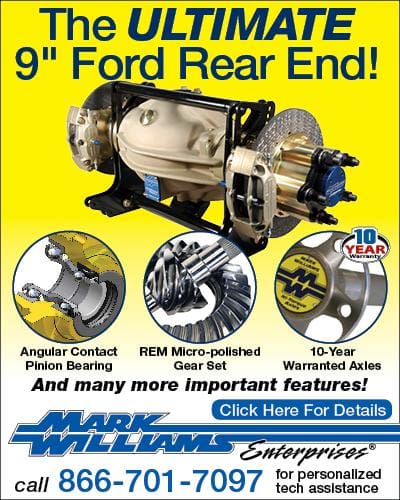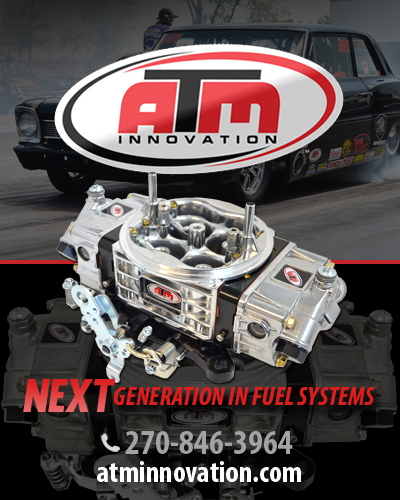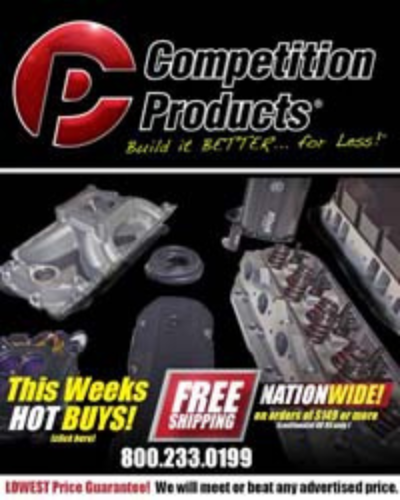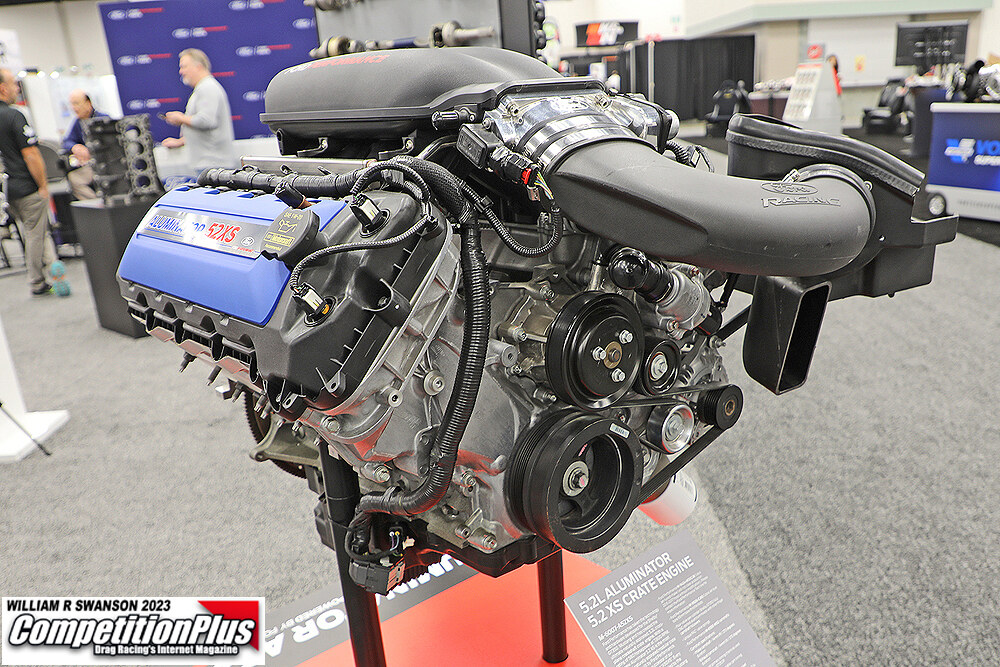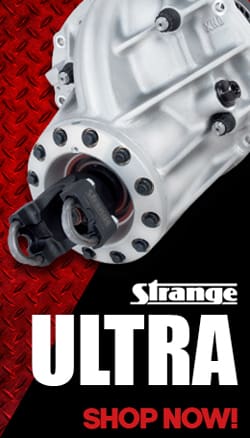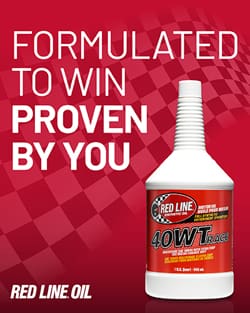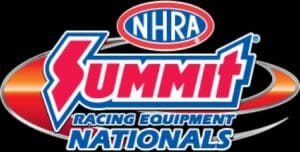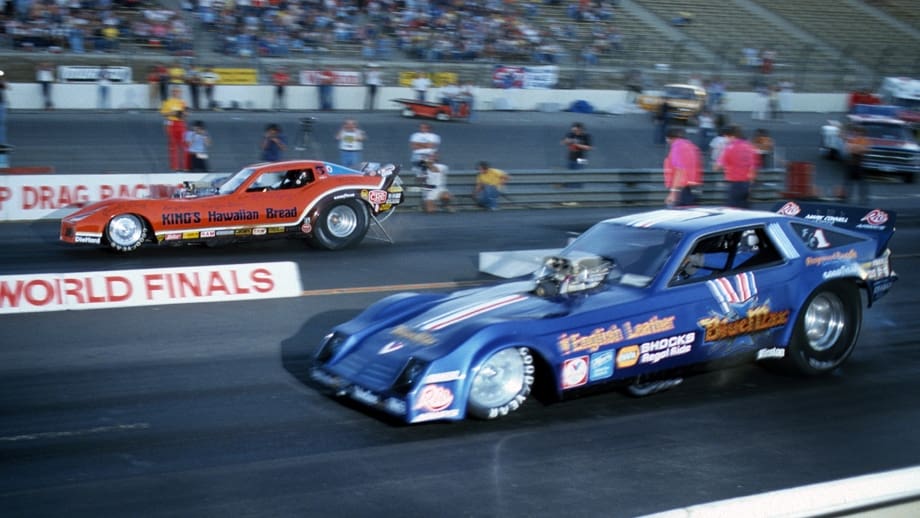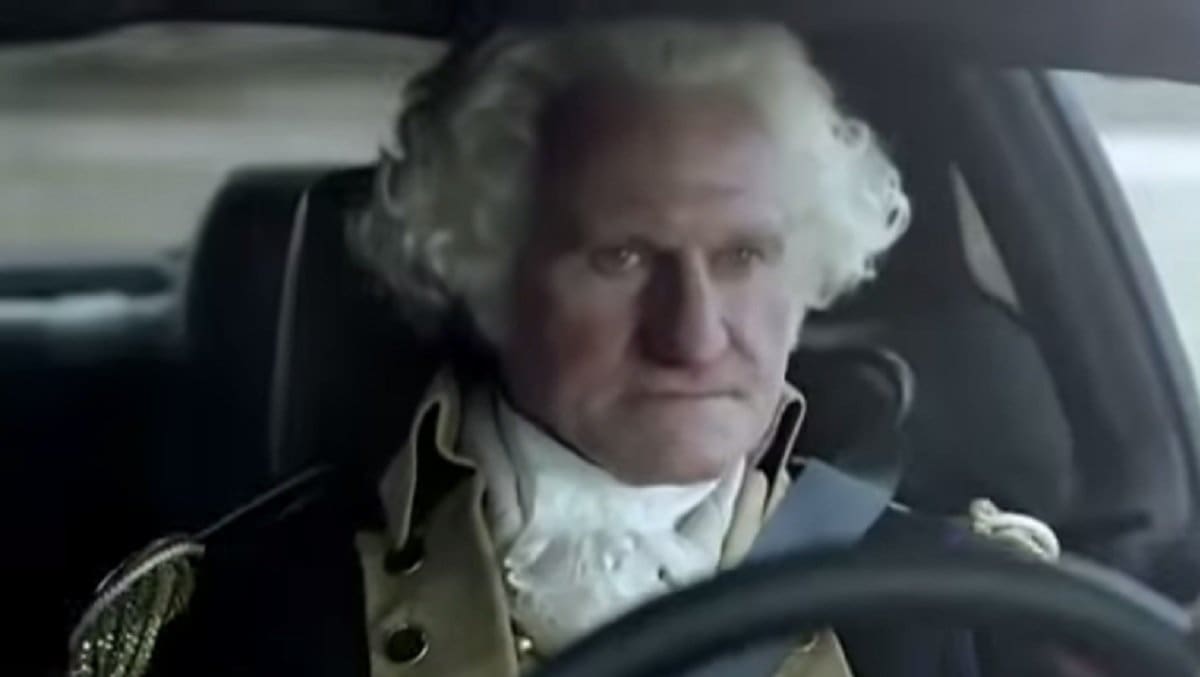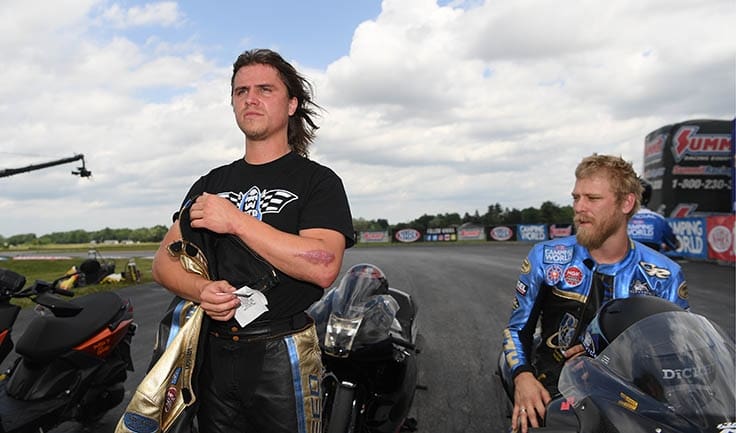 Scotty Cannon was up before sunrise last Saturday, hitting the road out of Lyman, S.C.
Scotty Cannon was up before sunrise last Saturday, hitting the road out of Lyman, S.C.
He was set to become the 20th inductee into Bristol Dragway’s Legends of Thunder Valley. But he wasn’t headed to Tennessee. He was going to Atlanta to help a buddy tune his race car.
“I’m getting a taste of the old days,” said the six-time IHRA Pro Modified champion and 28-time winner in the class he pioneered.
But today’s drag-racing scene and modern cars are far different than they were when he and Bill Kuhlmann, Al Billes, Freddy Hahn, Tim McAmis, and Ed Hoover – and even Shannon Jenkins, Mike Castellana, and Mike Ashley – were ushering in the class, inventing it. Now these 21st Century Pro Mods, with their sophisticated telemetry, require different skills than Cannon had to employ with his popular nitrous-injected ’41 Willys or his supercharged ’63 split window Corvette. Even the NHRA Funny Car class, in which Cannon competed for six years, has made huge performance strides seemingly overnight.
Cannon sees that when he helps his brother with his 275 drag radial car: “It takes all I can do to work the computers and get the car tuned just to go down the racetrack.”
He said, “I remember the day when we were all trying to break into the 5s [of five-second elapsed time]” – while he was entertained at Bristol by a Pro Mod field that posted E.T.s a sound three-tenths of a second quicker.
For Cannon, performance genuinely mattered, but as he hung his star in the popular Pro Mod galaxy and beyond, what captured the fans’ fancy was his over-the-top Oakley sunglasses, rad silver suspenders-like “legs” that arced over his shaved head and framed his trademark mohawk haircut. The dude was brazenly sassy, original, avant-garde, explosively cool. His cars trumpeted outrageous paint schemes as vividly colorful and transfixing as he was outside the cockpit.
“A lot of people have asked me, “why did you do that back then? What inspired you?” Cannon said, “I’d say, ‘A few of us used to get together and go to the beach. We’d all mohawk our hair, and we’d leave it mohawk, some of us would, some of us wouldn’t, and it kind of always stuck on me.’ I just wore it, and it stuck out, because I don’t remember ever seeing nobody with that but us back then. I mean, nowhere you went. When I was racing, you’d see a good bit of them, a lot at the racetrack. You’d see a good many of them out in public. And now I see a lot of them in public. I mean, a lot of them.
“I think I would fit in smoother right now than I did then. I wouldn’t be as different,” he said. “I really don’t know at this day and time, if a man was even going to try to be different – which I wasn’t trying – I have no earthly idea what you can do that these people aren’t doing today to be different.
It’s something else. You see everything now.
 “That’s one of the problems I run into when I first went with them,” Cannon said of the NHRA. “It wasn’t with all the drivers. It was just a couple. The Gary Scelzis and Pedregons, we all gelled good. John Force, all those were good. There was just a few guys that had to have their bow tie perfectly straight. You couldn’t have it a little bit crooked. And if you didn’t have yours perfectly straight, they looked down on you and had something to say about you.” One, he said, he had to “set straight right off the get-go.”
“That’s one of the problems I run into when I first went with them,” Cannon said of the NHRA. “It wasn’t with all the drivers. It was just a couple. The Gary Scelzis and Pedregons, we all gelled good. John Force, all those were good. There was just a few guys that had to have their bow tie perfectly straight. You couldn’t have it a little bit crooked. And if you didn’t have yours perfectly straight, they looked down on you and had something to say about you.” One, he said, he had to “set straight right off the get-go.”
Then he laughed: “Could you imagine right now if we’d had social media back in my day? They’d had to bleep everything out and people mad all the time and fussing back and forth about my fans. It was me against the world at one time. Looking back on it, I thought it was like terrible. It was some of the best times of my life.”
That just might have been one of the last times the NHRA races were rollickingly fun, largely because Cannon put the fans first, even if it meant interrupting his suppers.
“I’ve always put them first, because I’ve been in the restaurant business. My dad used to say, ‘The customer is always right.’ Well, that’s not true. But at the end of the day, if you can keep biting your tongue, they’ll still buy your food, and you can make it right. So yeah, they are right,” he said. “I look at that with my fans, because I don’t care what they want me to sign. I don’t care how many times if I was in a motor home eating – I might have to finish eating, but I’ve never kept them waiting. Always was out there, signing autographs as much as I could and dealing with them.
“They advertised that I give mohawks at Pomona one year,” he said. “It all started with [Oakley boss] Jim Jannard. He said, ‘You ought to give people mohawks.’ I said, ‘I can cut them.’ One of them [had hair that] hadn’t been cut in like 10 years. He had red hair, and it was down to his waist. Mohawked his hair and left it long. We had some of that real stiff like, they call it glue, and that’s what we used. We got it to stick up. He looked cool. She was loving it – and his dad. I think they wanted to see the hair go. We put it in cellophane bag and gave it to his mom.
“Qualifying Saturday night when we got done, it was about six o’clock, probably, whatever time you get done. It’s right about dark out there and I’ve done mohawks, cut mohawks. They were standing in line till two o’clock in the morning, Sunday morning,” Cannon the Barber said.
The marketing marriage between Cannon and Jannard has been thoroughly intriguing, still is even 20 years later. How could it be, this Southern hulk with a swashbuckling, take-no-guff swagger that seemed almost at once incongruous and completely fitting with his pudding-soft accent that makes a Yankee just want to hear him read the phone book all day long. He hung out with Extraordinary Joes who spent their days elbows-deep in indifferent race-car engines, oblivious to oil and grease and sweat and the clock on the shop wall.
Jannard, by contrast, floated about in the entrepreneurial exosphere. He founded Oakley (which he named for his English setter, Oakley Anne) and lived by his advice to “do something better than it has ever been done before – then let people know” as he expanded the brand with footwear, apparel, and accessories. Around the time he sold Oakley, he developed the Red Camera that disrupted Hollywood cinematography. The man even owns islands in Washington State’s Puget Sound and in the South Pacific nation of Fiji. It might seem puzzling how they could connect. But they did.
 “Well, believe it or not, I can relate a lot to Jim Jannard,” Cannon said, “Not money-wise, by far, but in just the way he acted, what he did, the way you treat your people good. But at the same time, he was different. A lot of the paint jobs on my car was of Jim Jannard, not of me. The Mad Scientist kind of was him. That’s what he was at Oakley. And I was always sort of a mad scientist of creating stuff in Pro Mod. So we had a lot of things that was a lot alike, and that sticks out. I have a lot of pictures of him and I, him and his wife, him in different pictures. And a lot of people say, ‘That guy looks a lot like you.’ I say, ‘Don’t say that. That’s been said a million times.’ That always sticks in my head. I guess he maybe met someone crazier than he was.”
“Well, believe it or not, I can relate a lot to Jim Jannard,” Cannon said, “Not money-wise, by far, but in just the way he acted, what he did, the way you treat your people good. But at the same time, he was different. A lot of the paint jobs on my car was of Jim Jannard, not of me. The Mad Scientist kind of was him. That’s what he was at Oakley. And I was always sort of a mad scientist of creating stuff in Pro Mod. So we had a lot of things that was a lot alike, and that sticks out. I have a lot of pictures of him and I, him and his wife, him in different pictures. And a lot of people say, ‘That guy looks a lot like you.’ I say, ‘Don’t say that. That’s been said a million times.’ That always sticks in my head. I guess he maybe met someone crazier than he was.”
How they met and developed a friendship might surprise folks. Jannard approached Cannon – and sort of stood back at first and watched how the racer operated.
“He went to Shreveport, Louisiana, for the whole race. He came up to me and actually bought some T-shirts, him and his wife on a Thursday. Nothing’s going on on Thursday. You’re really prepping for the race,” Cannon said. “And he came over and talked and bought a few shirts and said he’s up for a race to check things out and he’d see me tomorrow. He came back the next day, and he just kind of hung out a little bit.
And the conversation went like this:
Jannard: I really like your car. You’re one of my favorite drivers. What are your chances of winning?
Cannon: If nothing happens, I should win it. I’ve got one of the fastest cars out here. I don’t have any excuses.
After the first qualifying session, Cannon was sixth or seventh, and Jannard stopped by to chat with Cannon:
Jannard: I thought you had the fastest car.
Cannon: Well, I haven’t put my race motor in yet. That’s my match-race motor.
Jannard: Are you going to put it in?
Cannon: I will on Sunday.
Jannard: Why do you wait until Sunday?
Cannon: Because you don’t want to run your best motor that many runs.
Jannard: I’d have it in there and be No. 1 qualifier.
Cannon: Well, I’ll put it in there, then.
Cannon switched engines and improved to No. 1.
 “I had no idea who he was,” Cannon said. “I didn’t have an idea until he called me on the next Wednesday. He [had] told me he worked for Oakley on Sunday. He ‘had some connections,’ that’s what he said. And I said, ‘You work for them? You’re a sales rep?’ He said, ‘You could probably say that if you wanted to. But I can get you some free glasses for next year, if nothing else. That’s the least I can do.’ Then he shipped me a big box of glasses and asked me what I thought about them. And I must have like the ones he liked, because he got to talking to me about the Funny Car: Did I really want to drive one? He had heard I did. Of course, I did. I told him I’d do anything. And he said, ‘Well, you might just be careful what you say. You may just be driving one.’ That’s the way it went. It was just like a meant-to-be thing.”
“I had no idea who he was,” Cannon said. “I didn’t have an idea until he called me on the next Wednesday. He [had] told me he worked for Oakley on Sunday. He ‘had some connections,’ that’s what he said. And I said, ‘You work for them? You’re a sales rep?’ He said, ‘You could probably say that if you wanted to. But I can get you some free glasses for next year, if nothing else. That’s the least I can do.’ Then he shipped me a big box of glasses and asked me what I thought about them. And I must have like the ones he liked, because he got to talking to me about the Funny Car: Did I really want to drive one? He had heard I did. Of course, I did. I told him I’d do anything. And he said, ‘Well, you might just be careful what you say. You may just be driving one.’ That’s the way it went. It was just like a meant-to-be thing.”
That mean-to-be thing didn’t last long enough for the fans, who would love to see Cannon back on track. But they should be careful what they say, too, because Cannon warned that he, like the sport, has evolved – not strayed too far away from the independent self-made man who spoke his mind, just wiser.
He did say, “I would love to get back in the car. With all the back issues I have I don’t know . . . I’m doing great right now, because I’ve left it alone for so many years. I could get back in one, and I think I could still drive. I don’t have anything else wrong with me, but I hurt my back so many times in the car. Don’t want to ever do it. Teams and sponsors and stuff . . . I don’t know – it’d be a tough decision. If I had a good deal and was fully sponsored good, I’d think very seriously about it. There’s a lot better stuff [safety equipment] for it now, supports and stuff, back braces. We’ve got a lot better stuff now that makes it feel better. You don’t have to take any medicine or anything.
“I’d always wanted to drive one. I didn’t do nothin’ in Funny Car like I did in Pro Mod, but I stepped up into a whole different league,” Cannon said of jumping from IHRA competition into the NHRA.
“I was physically ready and my abilities were there. I had run a few NHRA races, but they had been under Super Chevy’s rules. I’ve been on their tracks but not with the NHRA,” he said.
“Just mentally, I don’t think I was quite ready for the hype,” Cannon said. “It was kind of a shock. It’s a cutthroat world over there, and you have to be real careful. I don’t play those games really easy. But I had to learn, and I think I’m more conditioned now that I would be.”
The first four seasons in the NHRA, Cannon raced in partnership with Oakley. It [the operation] was all mine. The fifth year I raced under Schumacher’s tent,” he said.
Now that he has had almost two decades to think about it, Cannon said, “I needed a little talking-to before I made that transition. I still would’ve did it, but I needed someone in my corner to tell me what to do, not to do, what to say, what not to say, because I usually just said what was on my mind, as long as it didn’t offend nobody or hurt them. And sometimes when you’re racing for someone else, you have to keep your mouth shut. I wasn’t really good at that.
“Me and Don, we always got along good. We had a few little disagreements but nothing to fuss about. I don’t know that I’ve had a bad quarrel with him, but one little bitty one. It was just a regular old male testosterone having to say something back and forth to each other. That was about it,” Cannon said.
“So looking back on it,” he said, “I can see that’s one of the mistakes I made that I shouldn’t have. I should have been a little more lenient. Sometimes I should have kept my mouth shut – just because I’m playing in their ballfield, that’s why. It’s not right or wrong. I could have said it different. We just didn’t see eye to eye. But in looking it over, I probably should have seen things different sometimes, or I should have been a little sweeter when I tried to tell him, ‘Maybe we’ll try this this way,’ or maybe, ‘I’ve done this or that. This worked for me this way,’ rather than ‘You do it your way and I’ll do it my way.’
 “I would do things a lot different than I did when I come with NHRA, not personally, like my hair or being different Scotty. But when it comes to management and dealing with the corporate people stuff, I’d handle it all different a lot better than I did to start with . . . because there were some mistakes I made and if I’m going to come play in your ballfield I got to play by your rules. If you can come play in mine, you got to play by my rules. Well, I’m playing in their ballfield. Sometimes I didn’t like playing by the rules, and I wouldn’t play by them.
“I would do things a lot different than I did when I come with NHRA, not personally, like my hair or being different Scotty. But when it comes to management and dealing with the corporate people stuff, I’d handle it all different a lot better than I did to start with . . . because there were some mistakes I made and if I’m going to come play in your ballfield I got to play by your rules. If you can come play in mine, you got to play by my rules. Well, I’m playing in their ballfield. Sometimes I didn’t like playing by the rules, and I wouldn’t play by them.
“And that don’t sit well with him, and it didn’t sit well with me, either. What happens is you create a lot of animosity around yourself and with them, amongst you and them and everybody around you where things aren’t a comfortable living position. Everybody’s not real comfortable like they should be when everything’s gelling together,” he said. “That’s where the team owner like me has to come in and make that happen. You got to make that happen. If you don’t make it happen, you’re not going to win.”
He said, “That’s one of the things I didn’t really have organized, that I didn’t really see good when I had my Funny Car teams. In IHRA I did. Well, my Pro Mod, because we all grew together. So we didn’t have to make it happen, it was a marriage between all us guys, and I hired them as my sponsorship got better. It grew from nothing, because there was no Pro Mod when I started. So we were actually one of the founders of that deal.”
Hindsight truly is 20/20, whether it’s from behind the rose-colored Oakleys or in the bright light of reality. And Cannon knows that. The talk at Bristol Dragway last Sunday centered on hindsight: how he raced to four wins in five final rounds there, how he won the 1993 Pro Mod Shootout and the 1988 Top Sportsman divisional points race, how he reeled off a string of nine No. 1 qualifying awards, how in 14 of his 16 Pro Mod starts at Bristol he never qualified outside the top three, how his semifinal finish at the 1991 Fall Nationals clinched his first IHRA championship series crown.
Hindsight isn’t what Scotty Cannon wants to dwell on. He appreciated the honor, absolutely. But even before Jerry Caldwell, executive vice-president and general manager at Bristol Dragway, bestowed it upon him Sunday, Cannon, 59, said, “I don’t never think you’re all the way successful until you’re retired, sitting back in an old chair with your grandkids and everything’s great and you’re basically financially fit where you can coast to your last day. That’s what I call successful. It ain’t having millions and millions of dollars. It’s just whatever’s going to be comfortable for you, and you may be happy at the time.”
He said, “There’s something missing in my life now. It’s probably racing, to be honest with you, because I still peck around and help these guys. But, like I said, I am not totally out of the loop by no means with everyone, but I would [compete] still, as long as it was a good-funded team. And I’m not talking about paying me a bunch of money. That’s not what I mean. I’m talking about funded enough so the car gets funded right.”
Cannon said as he pulled into the gates at Atlanta that “grandfatherhood” suits him well. “I love it,” he said. “I got four grandkids. I’ve got a granddaughter that’s 25, a policeman. I got a grandboy that’s 11 or 12. I got one that’s eight, and I got one that’s four. “I could talk about them forever and ever, but I got to make this car run today.”
And with that, he was wracking his brain, trying to figure out how to synch his brain with the laptop in his friend’s trailer. They had a fun ol’ time, messin’ with set-ups and throw-downs.
A few hours later, he was focused on Bristol, Tenn., and what awaited him there.
And before sunrise Sunday, Scotty Cannon was back on the road.










